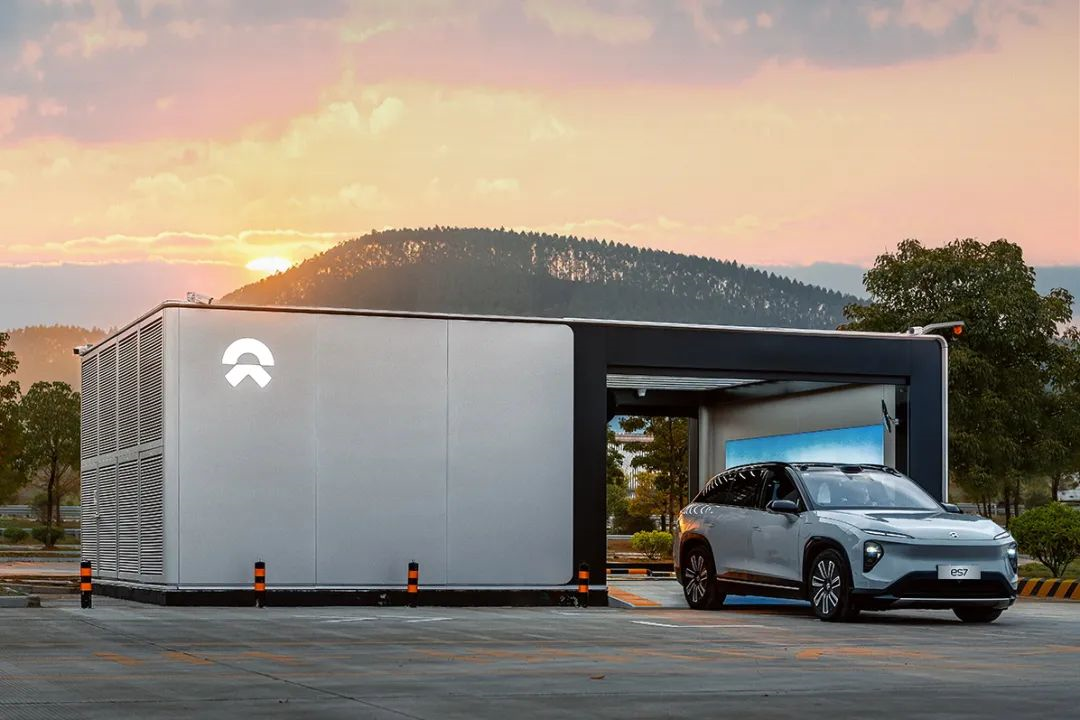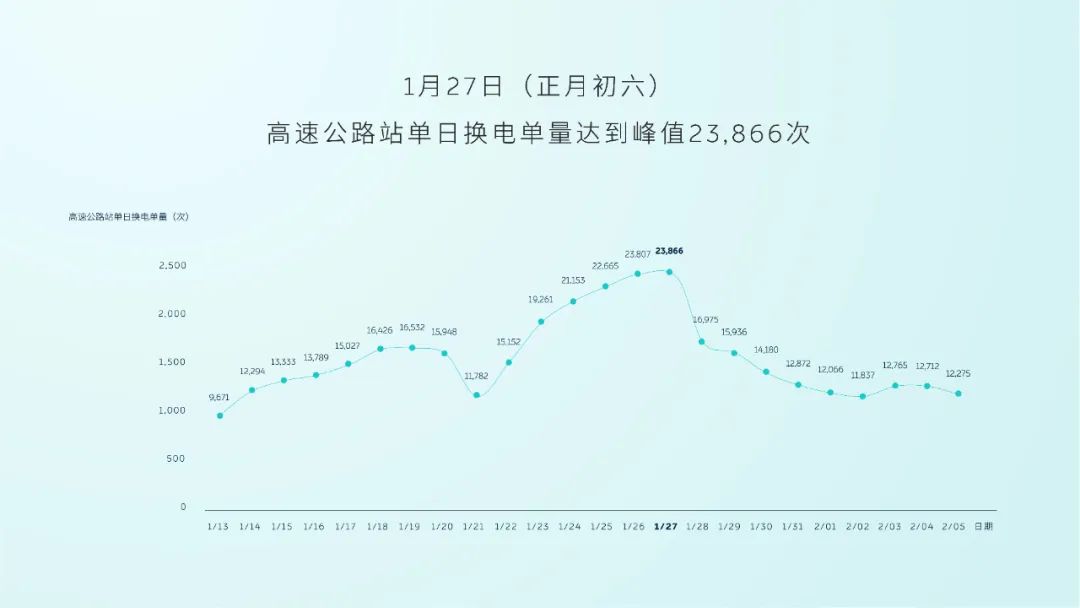Writing by: CH_Chen Han
“Making charging more convenient than refueling”, this is not just an empty slogan.
Nothing can stop the development of electric vehicles, except for short range and difficult charging. This obvious fact has been noticed by most people. Therefore, some vehicle manufacturers have developed plug-in hybrids as a transition, some have introduced large batteries and super-fast charging, while NIO has chosen battery swapping.
In 2023, when the penetration rate of new energy vehicles reaches 30%, the ambition of electric vehicles to grab market share from gasoline vehicles has been presented. Two weeks ago, BYD lowered the price of Qin PLUS DM-i to 99,800 yuan and shouted the slogan “Subversion of Fuel”.
And just this week, NIO announced that its target for building battery swap stations by 2023 has been increased from 400 to 1000, and more than 2300 battery swap stations will be built by 2023. Although the route chosen is different, the goal of “subverting fuel” is consistent.
The significant increase in battery swap stations is not a hasty decision, but is based on systematic thinking and ambition.
The Strategy Behind 1000 Battery Swap Stations
There are at least four levels of strategic thinking behind this decision: serving users, boosting sales, expanding territories, and laying the groundwork for sub-brands.
As a “user-oriented company” that is known for its “service-obsessed” culture, NIO’s primary goal for increased investment is still to serve its users.
As of the time of writing, NIO has built 1315 battery swap stations and 2340 supercharging stations nationwide, providing users with more than 15 million battery swap services.
NIO’s community calls residential or office buildings located within 3 kilometers of a battery swap station “Electric Zone Buildings”. In July of last year, the coverage rate of “Electric Zone Buildings” among NIO users was 62.1%, compared to only 29% in the same period two years ago.
NIO plans to increase this coverage rate to 90% by 2025, truly achieving the goal of “making charging more convenient than refueling”. The addition of 1,000 battery swap stations is still to serve this goal.
What is admirable about NIO is that while others were selling the anxiety about the range of electric vehicles, NIO has always been working hard to solve the problem. While everyone was making fun of the difficulties of charging electric vehicles during the Spring Festival period, only NIO made a firm decision to solve the problem.# Let Charging an Electric Vehicle be More Convenient than Fueling – NIO
In 2018, the statement “Let charging an electric vehicle (EV) be more convenient than fueling” was subjected to countless sneers and jeers. However, NIO has always taken it as a creed to lay out facilities for battery swapping and recharging. Among the 1000 newly-added battery swap stations this year, 400 of them will be located in high-speed service areas or at the freeway exits, further alleviating the stress of supplementing energy during peak periods such as the Spring Festival travel season.
Though these locations may be less frequented during normal times, they can greatly affect the charging experience at critical moments. During the recent Spring Festival travel season, the 346 high-speed battery swap stations that NIO already had provided 372,324 free swap services to users, with an average waiting time of 13.08 minutes during the masses’ most peak period on the sixth day of the Lunar New Year.
Though there were long queues at a few hot locations, both data and reality show that, compared with charging, swapping batteries is a better supplementing energy experience for driving. After the 400 new high-speed swap stations are built this year, this gap will be even more pronounced.
Many people criticize NIO’s battery swap stations, claiming that they cost a lot and don’t generate profits. However, at the current stage, the lack of profit pressure is actually the biggest advantage of swapping stations. Profit-seeking third-party charging service providers cannot put in a large amount of money in advance on high-speed energy-supplementing facilities as NIO has done, and this has given NIO the opportunity to pull ahead.
NIO regards battery swap stations as services, rather than as an independent business; NIO President Qin Lihong once compared them to “napkins in the restaurants.” In the short term, the purpose of having swap stations is not to generate profits but to serve customers well and promote sales volume. This is where the advantages of car manufacturers’ building their own energy-supplementing facilities come in. They can take a longer-term view and recoup their investment in these facilities by selling more cars.
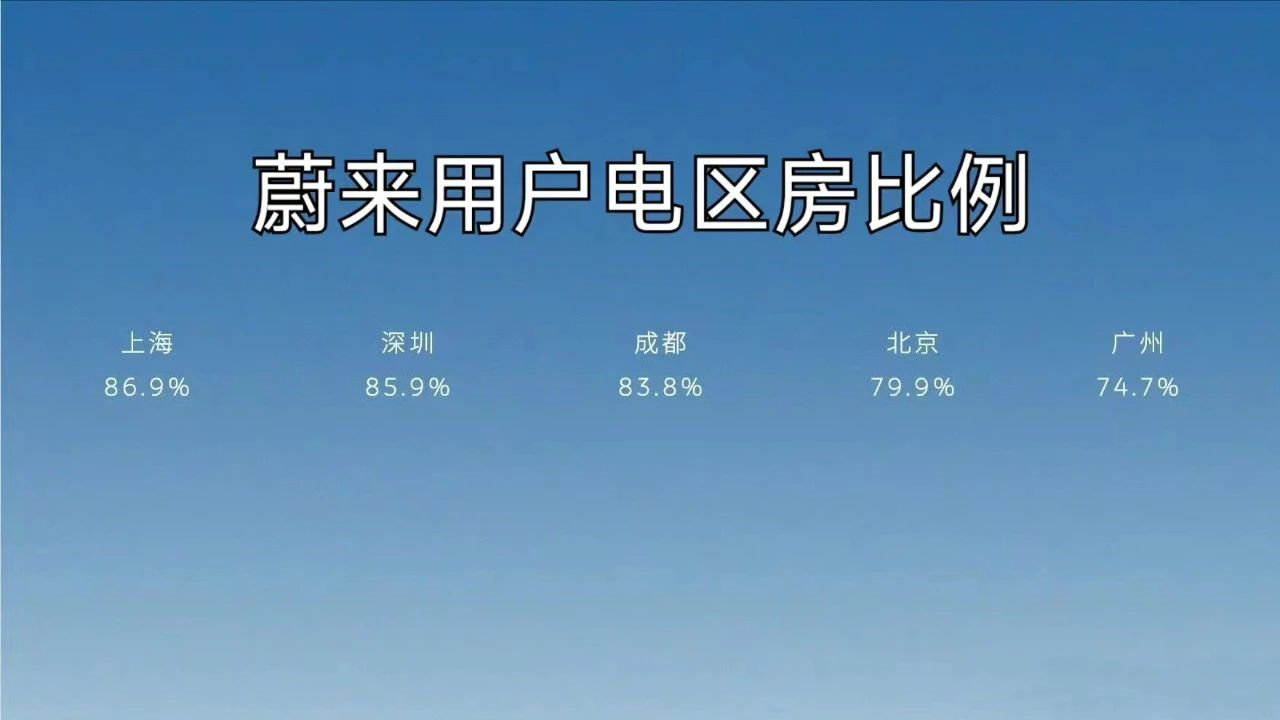
At present, NIO’s sales are mainly concentrated in the Beijing, the Yangtze River Delta region, the Pearl River Delta region, and Chengdu, which are tier-one and tier-two cities. Regional sales are basically proportional to the number of swapping stations.In the past, NIO’s strategy for building power swap stations was to locate them where users are. This logic applies to first and second-tier cities that have a well-developed charging infrastructure. However, the opposite relationship between power swap stations and users is also true. “Where power swap stations are, users will be” logic is more suitable for third and fourth-tier cities and counties with insufficient charging infrastructure.
I am a living example of this, because my hometown is a third-tier city. I made up my mind to buy an electric car because there was a power swap station on the way home, and replenishing energy was no longer a problem.
From a business perspective, the significant increase in the number of power swap stations will definitely promote NIO’s sales growth. For NIO, power swap stations are not only a quick energy replenishment facility that overcomes users’ anxiety about battery range, but also an effective advertisement.
Passersby at a power swap station who see someone squatting or lying on the ground watching the battery replacement process should not be surprised. Such advertising effects are much better than investing in a billboard.
Currently, in third-tier cities and below where power swap stations are not fully covered, NIO’s sales have not reached their ideal level, which is inferior to the plug-in hybrid products of BYD. Therefore, NIO CEO William Li proposed: “600 of the 1,000 newly added power swap stations this year will be deployed in urban areas, focusing on third and fourth-tier cities, and counties with a certain user base but no power swap stations yet.” This can be seen as a signal that NIO’s sales channels are further sinking.
Assuming that the power swap process takes 10 minutes and users swap batteries once a week, currently, a second-generation power swap station can serve approximately 1,000 users. The third-generation power swap stations, which have higher service efficiency, will be mass-produced in April this year, and will be deployed at a speed of 120-150 per month starting from June.
It can be foreseen that the impact of large-scale power swap station deployment in third and fourth-tier cities and counties, where the awareness of electric cars is still relatively low, will be significant and strong. After raising awareness and eliminating anxiety, the next step is to convert it into sales.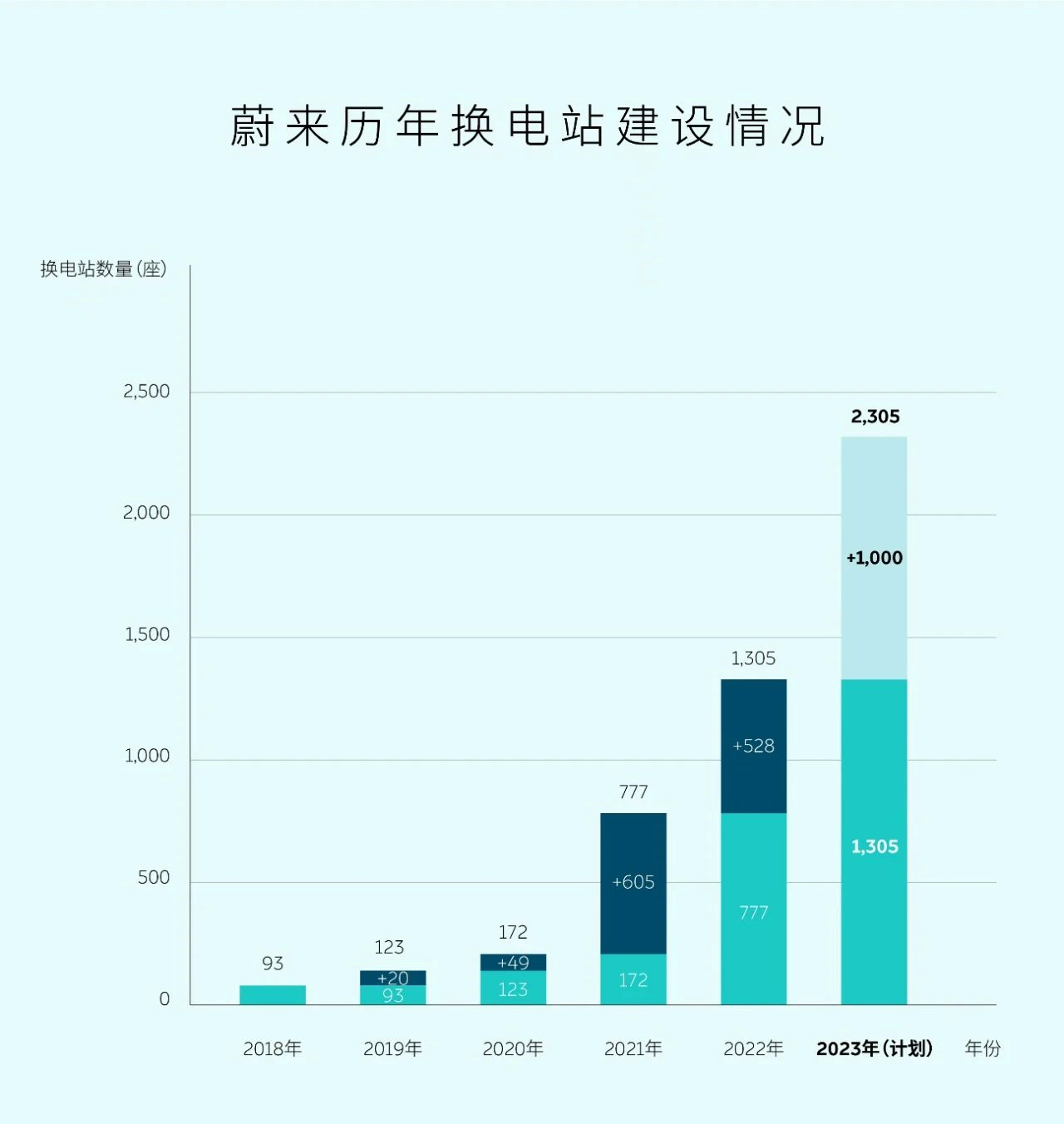
Of course, the inertia of consumption cannot be completely reversed in a short time. Even if the driving effect of battery swapping station on sales is less than expected, behind the strategy of significantly increasing battery swapping stations, NIO has a longer-term thinking.
First of all, it is to “grab the ground” and occupy high-quality energy-supplementing locations and power resources. Although theoretically, battery swapping stations or charging piles can be built wherever electricity is available, in practice, there are many restrictions on site and grid capacity, especially in busy urban areas or on highways, where electric vehicle energy-supplementing sites are scarce resources.
Especially on highways, NIO has occupied many energy-supplementing locations in service areas by signing contracts with multiple highway service companies, and can also build supercharging stations supporting battery swapping stations. It is even more difficult for other manufacturers to enter.
Secondly, the upcoming third-generation battery swapping station will be compatible with the sub-brand with the internal code name “Alps”. Previously, in the communication meeting, Li Bin revealed that the sub-brand will launch “Battery Swapping Version Model Y and Model 3”, priced at 200,000-300,000 yuan, 10% cheaper than Tesla, and annual production capacity planning for 500,000 vehicles.
Significantly increasing battery swapping stations, just like the controversial “NIO will not reduce prices” before, can be regarded as paving the way for the sub-brand.
Imagine that by 2024, when the “Battery Swapping Version Model Y and Model 3” is delivered, there are already more than 1,000 battery swapping stations nationwide that can serve it, and it is still “rechargeable, swappable, and upgradable”. Consumer’s most concerned about issues such as range, battery swapping problems, and even battery life problems have been resolved. There is no good reason for poor sales.

Finally, don’t forget that battery swapping stations also have profitability. Now, NIO provides up to 6 free battery swapping services for new users each month, and payment is required after exceeding the limit. Because the energy-supplementing efficiency is much higher than charging, and the charging fee is only about 0.5 yuan/kWh higher than that of general charging piles, many vehicle owners will choose to pay for battery swapping when they are in a hurry.
And the subsequent launch of the NIO sub-brand will most likely cancel free battery swapping. NIO Energy’s senior vice president, Shen Fei, estimated that at a profit of 0.6 yuan per kilowatt-hour and an average of 50 kilowatt-hours per transaction, a battery swap station could make 500,000 to 600,000 yuan in revenue per day by swapping batteries in 50 transactions, which can basically cover the site rental and equipment depreciation costs of the battery swap station. If we calculate that each vehicle swaps batteries once a week, a battery swap station can serve about 350 vehicles, which can cover its costs.
According to NIO’s plan, by 2025, 4,000 battery swap stations will be built worldwide, which will require 1.4 million vehicles to swap batteries and cover the costs of the battery swap station completely. Relying solely on the current sales volume of the NIO brand is far from enough, but with the sales of the sub-brands, this goal is achievable.
Battery swapping: A difficult but right path
People tend to be keen on asking questions for others, but they neglect that solving problems is the part that creates value.
There has never been a stop to the questioning of battery swapping mode since its inception. Although NIO has built more than 1,300 battery swap stations since May 2018, the public still abounds with the prejudice that “battery swapping has no future.”
Some people doubted whether the popularity of super-fast charging would render battery swapping meaningless, others questioned whether the service capacity of battery swap stations was indeed better than that of fast charging, and some questioned whether the heavy assets of battery swap stations would drag down NIO, and the loss of tens of thousands of batteries in the battery swap station would be a bottomless pit…
Whether battery swapping has a future fundamentally depends on whether the problems it solves today still exist in the future and whether its role played today can continue in the future.
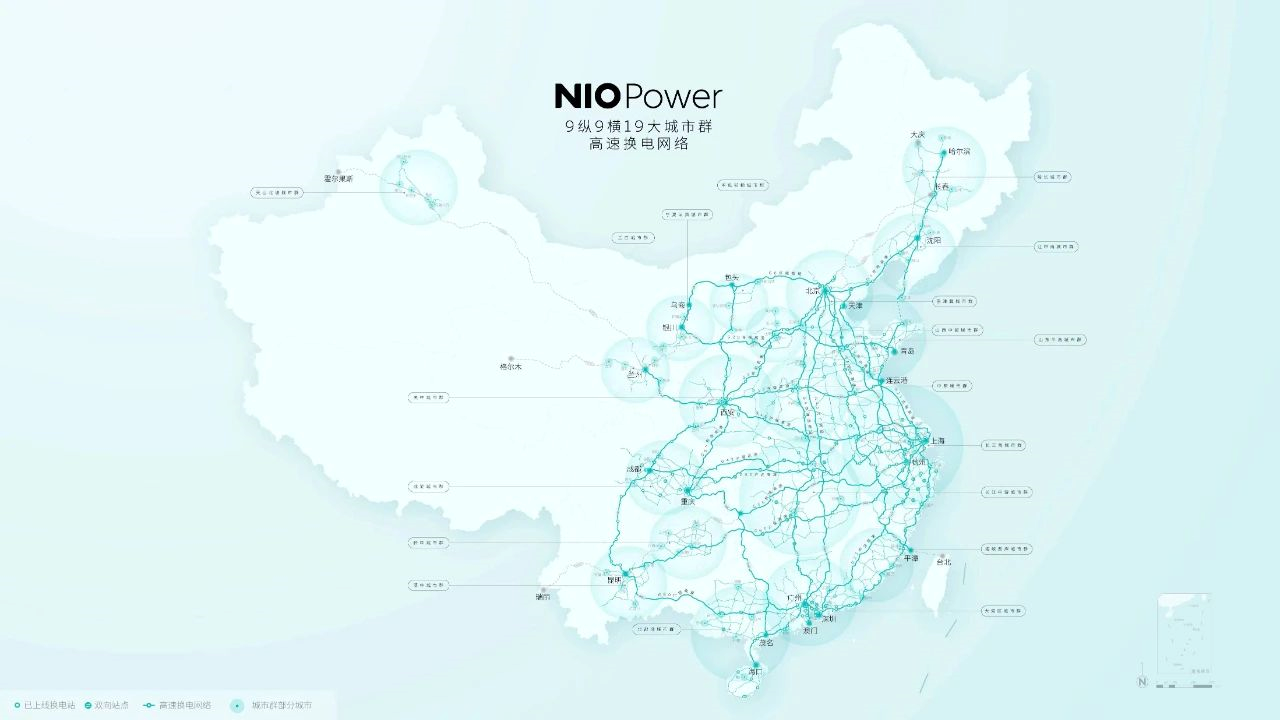
No one can deny the rationality of the battery swapping mode’s existence today. It effectively solves the two key problems, namely, the short endurance of electric vehicles and the difficulty of supplementing power. By quickly exchanging batteries, the electric vehicle, even with a real endurance of only 200 km, can run long distances without worry.
If we ignore the issues of investment cost and maintenance cost of battery swap stations, then the battery swapping technology itself is undoubtedly beneficial for promoting and popularizing electric vehicles and enhancing the user experience of using electric vehicles. In the past five years, NIO has provided more than 15 million battery swap services, both data and user reviews fully proving that battery swapping mode is standable and workable.More importantly, in the foreseeable future of at least two years, the pain points of electric vehicle range and charging are still widely existent. The former is limited by battery technology and cost. Even with the upcoming application of semi-solid-state batteries this year, although the energy density of batteries is greatly increased, the cost of large capacity semi-solid-state batteries is difficult to decrease.
The main problem of the latter is that the sales growth rate of new energy vehicles is much higher than the construction speed of charging facilities. Many car companies have high sales of new energy vehicles, but wait for others to build charging stations. Especially on highways, due to multiple constraints such as site, service provider, and power grid capacity, the problem of difficult charging during holiday peaks is hard to alleviate.
Moreover, even if 800V high-voltage fast charging is promoted and applied, the efficiency advantage of battery swapping stations still exists. The NIO second-generation battery swapping station can complete charging from 0-92\% within 7 minutes (including total time of entering and leaving the station), and no 800V high-voltage charging station has been able to achieve this single-vehicle charging efficiency.
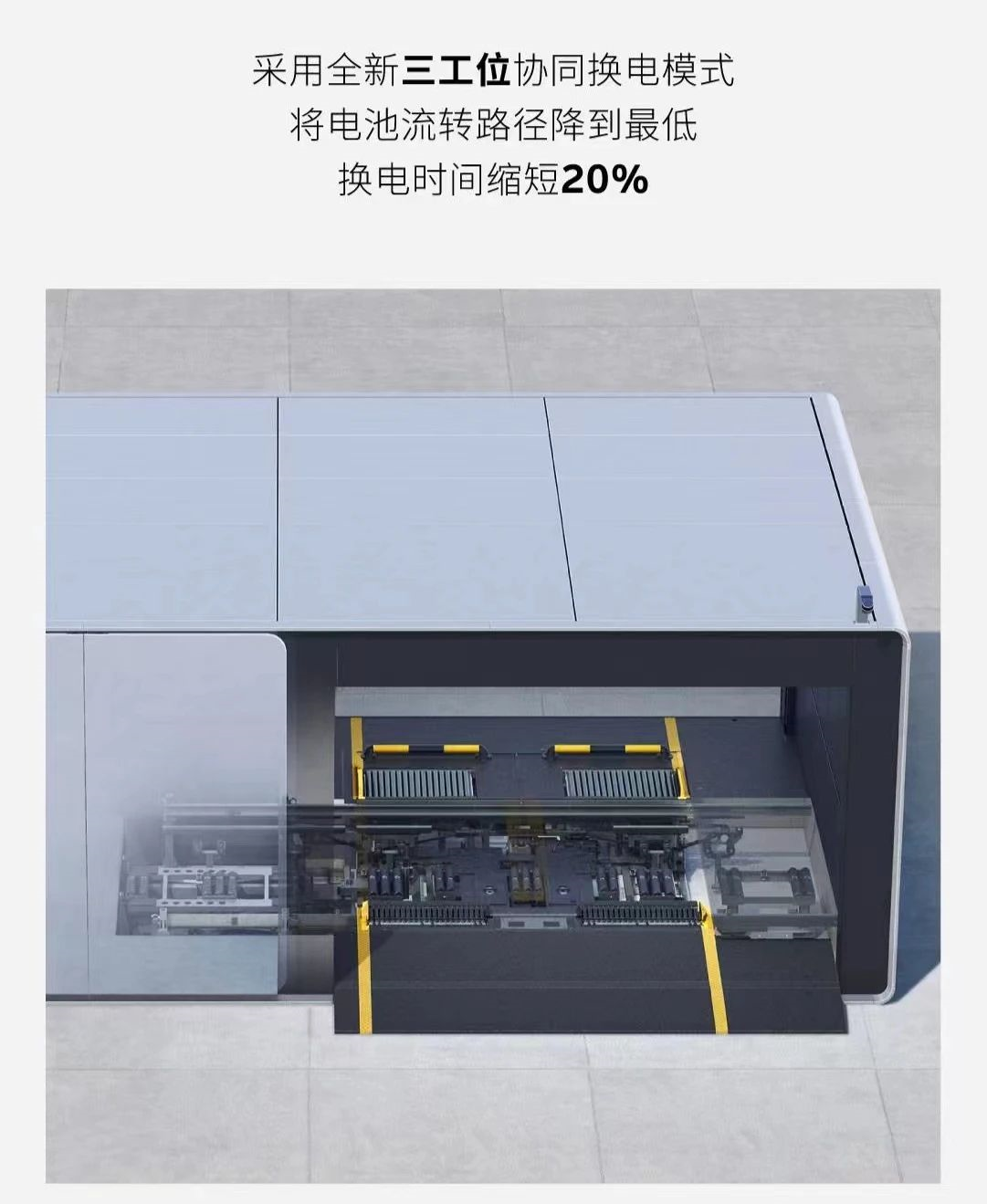
Meanwhile, the NIO third-generation battery swapping station also supports 800V high-voltage architecture, shortens the battery swapping time by 20\% compared to the previous generation, increases the battery compartment to 21 from 13, and increases the maximum daily battery swapping capacity to 408 times, improving the service capability by 30\% compared to the second-generation battery swapping station. The battery swapping station is essentially a centralized charging station for batteries, and it also benefits from the improvement of fast charging technology.
Therefore, at least in the next two years or so, the problems solved by battery swapping stations today will continue to exist, and their role will continue to be effective.
Many people and companies always say that they want to take the “difficult but correct” path, and battery swapping is NIO’s “difficult but correct” path.
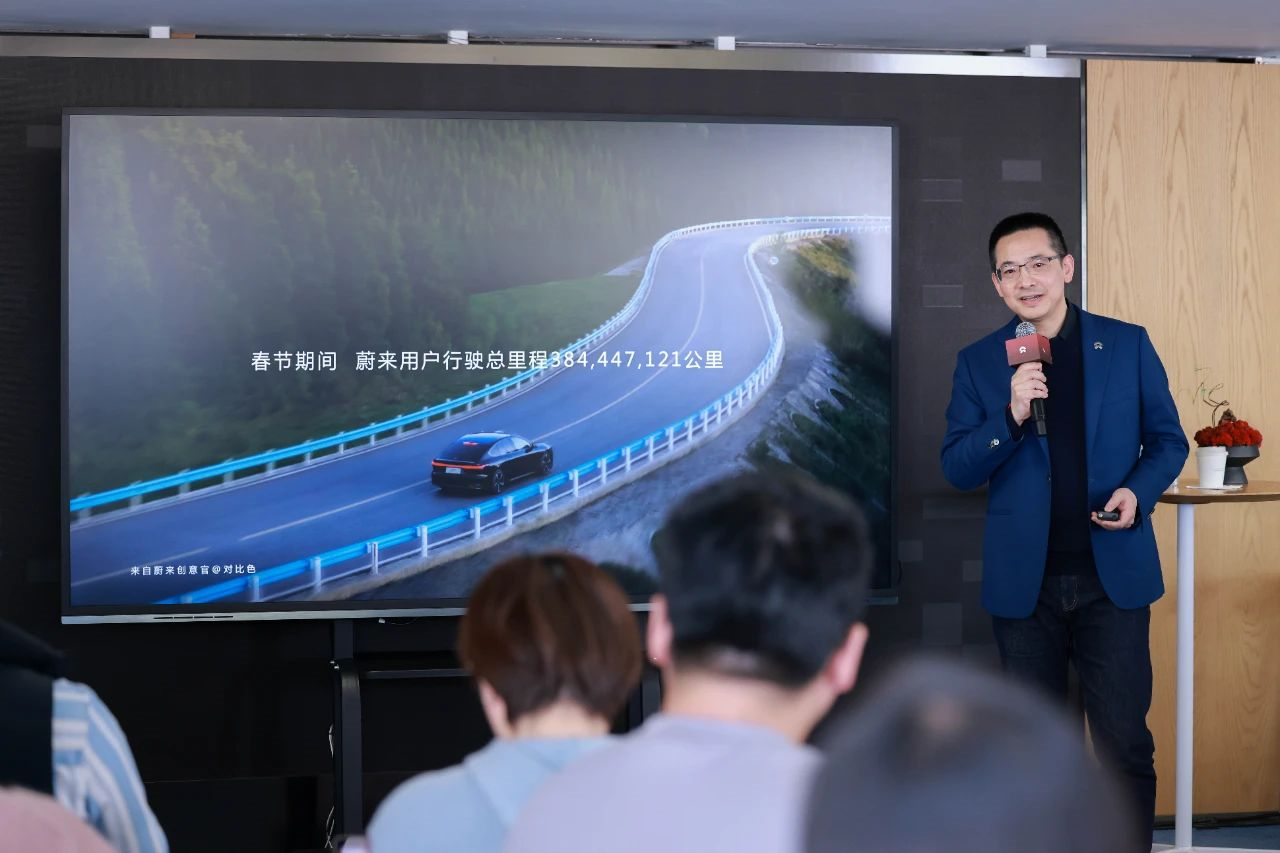
As for whether investing heavily in charging and swapping infrastructure and services will bankrupt NIO, Qin Lihong responded to such doubts at the New Year communication meeting:
“In the overall financial structure of the company, I may have mentioned the basic formula in previous conversations with media friends. NIO’s vehicle sales gross margin should be roughly equal to the company’s management and marketing expenses, with a slight difference, and the losses we have are approximately equal to our research and development expenses. In this way, the entire company in a new, emerging industry is doing relatively well, maintaining development speed and providing better satisfaction and experience for today’s users as much as possible.”If my gross profit is significantly lower than our sales service costs, such as all the services related to charging stations and battery swapping stations as mentioned today, which are covered by our sales service costs, we may need to slow down a bit or alternatively explore ways to sell more cars. Currently, I believe there is no problem following our plan.
“The money we make from selling cars can be used for services, but we won’t lose money because of increased investments in services. This is the basic principle that NIO follows when it comes to controlling service inputs.”
Products should lead the way, but charging facilities are crucial
Also at this communication meeting, Qin Lihong urged EV manufacturers to build charging facilities, and automakers’ privately-owned public charging piles should be open to all EVs.
“We are not working with gasoline cars. The job of gasoline cars has been done by companies like PetroChina and Sinopec, and they don’t have to worry about it. After all, the facilities for EVs are still in the early stage of development. We need to consider the complete chain of travel for vehicle owners.”
“We are a loss-making company, we haven’t made any money yet, and I think companies that make money should do this even more.”
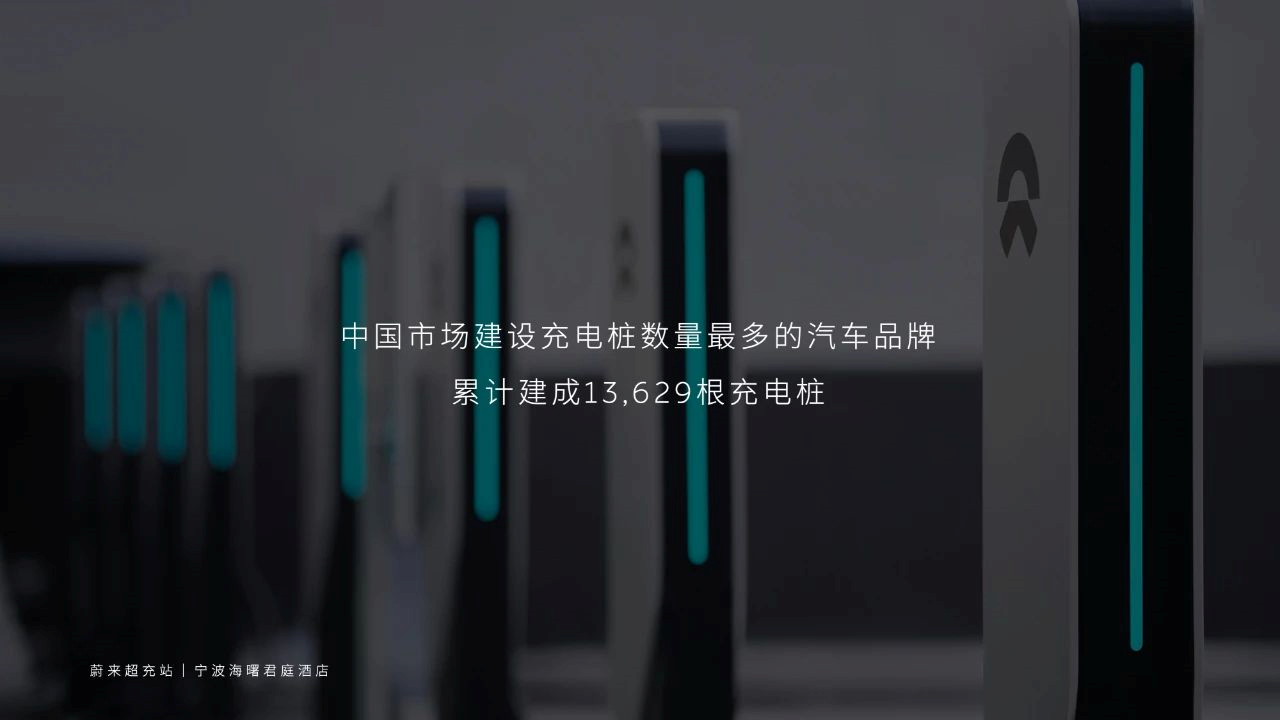
The products should be rolled out to take over the market of gasoline cars, and charging infrastructure needs to be ramped up to remove battery anxiety for users. It is the responsibility of every EV company to do so.
With 1,315 battery-swapping stations and 13,734 charging piles, NIO is well-positioned to make this statement with sincerity and conviction.
This article is a translation by ChatGPT of a Chinese report from 42HOW. If you have any questions about it, please email bd@42how.com.
